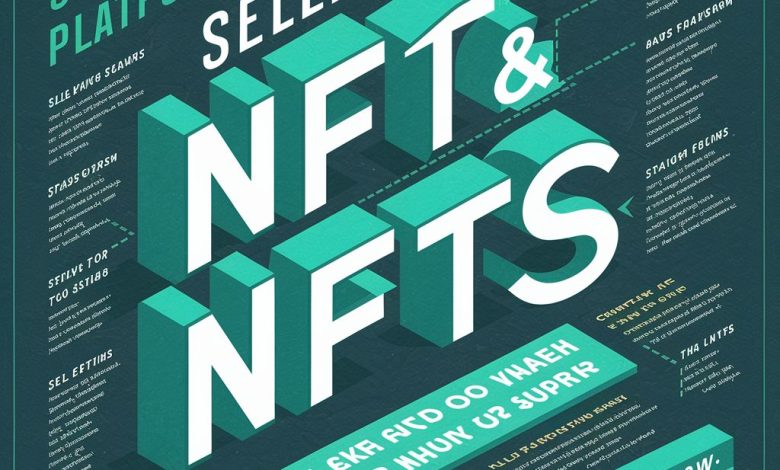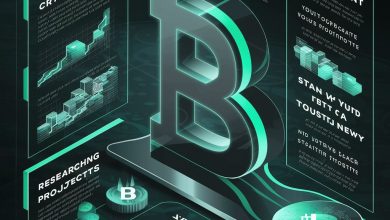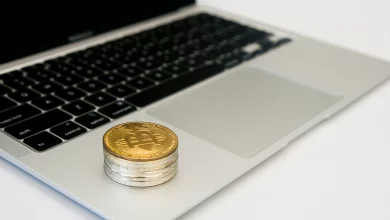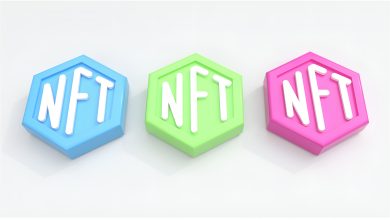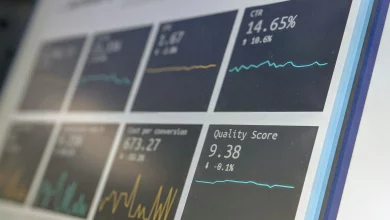Top Platforms for Selling NFTs – Compare Now
You’ve seen the headlines: the non-fungible token, or NFT, market is exploding, with millions of dollars changing hands daily for virtual goods and digital art. Whether you’re an artist or a collector, the big question that remains is: Where is the best place to sell NFTs? Do you yet know which top NFT marketplaces are more suitable to your needs? Or, based on the latest NFT marketplace ratings, what are the advantages and disadvantages of these popular platforms? In this article, we’ll dive into the heart of this digital art revolution, comparing the top platforms to sell NFTs and guiding you to find one that aligns with your digital currency needs.
Key Takeaways:
- Understanding the dynamics of NFT marketplaces and their role in the digital economy.
- Identifying factors to consider when selecting the best marketplace for selling your NFTs.
- Meeting the top marketplaces for selling NFTs.
- Reviewing user experiences across different platforms based on credible NFT marketplace reviews.
- Getting insights into how to sell NFT art effectively and lucratively.
- Discovering the minting process and choosing the right blockchain for NFT creation.
Understanding NFT Marketplaces and Their Importance
As we delve into the world of non-fungible tokens (NFTs), one cannot overlook the pivotal significance of NFT marketplaces. These specialized platforms serve as the foundation for conducting transactions using NFTs, acting as key players in the rapidly expanding digital economy. Whether you’re interested in selling NFT tokens or curious about how to sell NFT art, gaining an understanding of NFT marketplaces and their role in the digital space can aid greatly in your journey.
What is an NFT Marketplace?
An NFT marketplace is a dedicated online platform where digital assets in the form of non-fungible tokens are bought, sold, and traded. Going beyond the realm of traditional art, these unique tokens, encapsulating anything from digital artworks and music to virtual real estates and collectibles, create a new avenue for artistic and creative expression.
The Role of NFT Marketplaces in the Digital Economy
NFT marketplaces have inherently become a cornerstone of the digital economy. They provide a platform for artists and creators to monetize their work in a way never seen before, allowing them to sell their creations directly to the consumer without intermediaries. This direct economic model stimulates a creative resurgence and entrepreneurial spirit among artists, while investors and collectors find new avenues to invest in unique digital possessions.
Transforming the digital landscape, the significance of NFT marketplaces lies also in their ability to harness blockchain technology to authenticate and establish irrefutable proof of ownership and originality. This unprecedented level of security and transparency have broad implications for the future of digital transactions and ownership.
Let’s examine the core benefits of NFT marketplaces in the table below:
| Benefits of NFT Marketplaces | Examples |
|---|---|
| Empowers Artists and Creators | Artists and creators get unparalleled access to a global audience, retaining more income through direct sales. |
| Ensures Authenticity and Ownership | Blockchain technology guarantees the provenance and authenticity of the token and establishes unalterable proof of ownership. |
| Opens New Investment Opportunities | Investors get an opportunity to invest in unique digital assets with potential for high returns. |
| Boosts Digital Economy | NFT marketplaces help stimulate the digital economy by facilitating the exchange of virtual goods in a secure and transparent manner. |
Now that we’ve shed light on what NFT marketplaces are and their importance, the subsequent sections of the article will guide you through factors to consider when choosing an NFT marketplace, tips, and best practices for selling NFTs, and reviews of top NFT platforms.
Factors to Consider When Selecting an NFT Platform
Selecting an appropriate NFT platform is key to your success selling NFTs. Several considerations play an essential role in optimizing your selling experience. We’ll walk you through some important aspects, such as ease of use and user interface, transaction fees and royalties, and the security measures and blockchain technology used by the platform.
Ease of Use and User Interface
For both experienced and new sellers, navigating the marketplace should be straightforward. The user interface design of an NFT platform greatly determines its accessibility. A complex or awkward interface can deter potential sellers and buyers, directly impacting the success of your NFT sales. Always prioritize platforms that offer comprehensive features without compromising simplicity.
Transaction Fees and Royalties
Transaction fees and royalties are crucial financial factors that can significantly affect your profits when selling NFTs. You need to pay close attention to the cost of transactions on different platforms. Moreover, the royalty structure offered by the platform adds a continuous revenue stream for NFT creators from subsequent resales, strengthening long-term profitability. Both aspects play a central role in the nft platform comparison process.
Security and Blockchain Technology Used
The blockchain technology used by an NFT platform determines its security and efficiency. Platforms built on more secure, scalable, and efficient blockchains provide better protection for your digital assets and transactions. Conduct extensive research on the blockchain technology behind the platforms to ensure you make an informed decision.
| NFT Platform | Interface Ease of Use | Transaction Fees | Royalty Structure | Security and Blockchain |
|---|---|---|---|---|
| OpenSea | User-friendly | 2.5% | 10% on subsequent resales | Ethereum, high-level security protocols |
| Rarible | Intuitive design | 2% | Can set custom royalties | Ethereum, secure Smart Contract technology |
| Foundation | Sleek and minimalistic | 5% | 10% on subsequent sales | Ethereum, robust security measures |
To conclude, the right NFT platform caters to your specific needs and strategic goals, enabling a successful and rewarding selling experience. As you make an nft platform comparison, consider the practicality of the interface, transaction fees, royalty structures, and the security offered by the underlying blockchain technology. All these considerations combined will aid you in receiving the best tips for selling nfts.
Best Place to Sell NFTs
After much deliberation on trading platforms for non-fungible tokens (NFTs), it is time to reveal those marketplaces that truly stand out. Having sifted through countless nft marketplace reviews, focusing particularly on services catering to creators, we present the marketplaces that offer the most promising opportunities for selling your digital tokens. These handpicked platforms are not only popular but are also recognized for their excellent user interface, advanced features, transparency, and robust security.
Let’s take a closer look at these top-tier platforms for NFT trading.
| NFT Marketplace | Key Features | Benefits for Creators |
|---|---|---|
| OpenSea | Ease of use, diverse NFT categories, user-friendly platform | Buyer protection, strong community support |
| Rarible | Open-source, democratized access, creator governance | RARI token rewards, copyright protection |
| Foundation | Aesthetic appeal, curated content, high-profile collaborations | Vetted community, prestige, high selling prices |
As a creator exploring where to mint nfts, these platforms offer a myriad of features designed to showcase your unique digital assets. From allowing a diverse array of NFT categories to offering creator governance, each of these platforms caters to creators seeking to establish a foothold in the dynamic world of NFTs. However, keep in mind that choosing the right platform depends on your specific goals, the nature of your digital tokens, and the target audience you aim to attract.
Remember, the best place to sell your NFTs will always be where your potential buyers are!
In the following sections, we will delve deeper into the process of selling NFT art on top platforms and provide practical tips to help you optimize your sales strategies. Stay tuned for more!
How to Sell NFT Art on Top Platforms
Entering the realm of NFT art sales can be a riveting yet daunting experience. A methodical approach is central to successful sales. This includes preparing your digital art for showcasing, minting it carefully on a blockchain, and devising an effective strategy to sell across top NFT marketplaces. Let’s delve deeper into this process to better understand the nuances.
Preparing Your NFT for Sale
Initially, bringing a piece of NFT art to market requires insightful evaluation and preparation. Appraising the value of your NFT art involves scrutinizing various factors like the originality, aesthetic appeal, the artist’s recognition, and current market trends.
You can enhance your artwork’s appeal by employed refined digital techniques to render impeccable visual features. A captivating narrative about your creation process or inspiration can further allure potential buyers. Thus, curating not only your art piece but also its presentation is a vital step on your journey to successful sales.
Minting Your Artwork as an NFT
Minting is another essential step in selling your NFT art. It involves converting your digital artwork into a blockchain token. The token will represent your artwork in the digital space, creating a unique identity and proof of ownership.
Remember, minting involves a small fee (also known as gas fee), making it necessary to choose the right time and blockchain for affordability.
After minting, it’s time to select an appropriate platform among the top NFT marketplaces to list your NFT for sale. The choice of platform should consider the target audience, platform fees, and its reputation in the NFT community. Be sure to take advantage of platform-specific features to optimize visibility and attractiveness of your listing.
Selling NFT art successfully requires consideration beyond just the artistic element. From how and when an art piece is minted, to the selection of platforms for listing, every step impacts your success in the NFT domain. Stay tuned as we proceed towards an in-depth exploration of minting processes and different blockchain platforms apt for your NFT listing.
Where to Mint NFTs Before Selling
Deciding where to mint NFTs is a crucial first step towards selling your non-fungible tokens. Selecting the right blockchain and understanding the minting process can greatly influence your overall success and profitability. Let’s delve deeper into these fundamental aspects.
Understanding the Minting Process
The minting process is essentially the creation phase of your NFTs. During this process, your digital artwork or collectible is authenticated and turned into a unique digital token, which is then saved on a blockchain. This tokenization of your asset bestows it with distinct attributes, making it non-fungible and therefore valuable. Understanding the ins and outs of this process allows you to better navigate the world of NFTs and opens the gateway to selling your unique digital items.
Remember, an NFT’s uniqueness and value are tied to its rareness and authenticity, reinforcing the importance of the minting process.
Choosing the Right Blockchain for Minting
Choosing the right blockchain for minting is as important as creating the right artwork or collectible. Multiple factors can come into play here, such as gas fees, network speed, and community support. Varied blockchains like Ethereum, Binance Smart Chain, and Flow each have their own unique advantages and trade-offs. Making an informed choice can boost not only the minting process but your overall NFT selling experience.
| Blockchain | Gas Fees | Network Speed | Community Support |
|---|---|---|---|
| Ethereum | High | Relatively slow | Excellent |
| Binance Smart Chain | Low | Fast | Good |
| Flow | No gas fees | Very fast | Excellent |
At the end of the day, where to mint NFTs fundamentally depends on your individual preferences and the specific needs of your digital art or collectibles. Invest time in learning about the diverse services provided by different blockchains and take advantage of the one that best fits your requirements.
NFT Marketplace Reviews: What Users Say
When exploring non-fungible token (NFT) marketplaces, nothing is more crucial than understanding the real user experiences. From these extractive nft marketplace reviews and ratings, you gain invaluable insights into what actually works and what doesn’t when it comes to selling your NFTs.
The user experiences from different NFT marketplaces can paint a vivid picture of the platform’s performance, ease of use, customer service, and overall reliability, helping you choose the marketplace that aligns best with your selling goals.
“Despite being new to the NFT scene, Mintable provided me an exceptionally user-friendly interface and prompt customer support. As an artist, it was the perfect platform for me to sell my digital creations.” – Mintable User
Let’s dive deeper into what the user experiences from some of the notable NFT marketplaces reveal.
- OpenSea: Known for its user-friendly interface, OpenSea is often praised for providing a seamless marketplace experience to both newbies and seasoned NFT collectors and creators.
- Rarible: While acclaimed for its proactive community, Rarible sometimes receives mixed reviews concerning its high Ethereum gas fees.
- Foundation: Users applaud Foundation for its curated content and high-quality NFT art, although some express a desire for a wider variety of digital collectibles.
- Nifty Gateway: Praise is frequently showered on Nifty Gateway for its exclusive drops and high-profile collections, despite it being a more closed ecosystem compared to its peers.
Besides these subjective reviews, we’ve also compiled marketplace ratings based on specific user rating categories to give you a more objective view of these NFT platforms.
| NFT Marketplace | User Interface | Customer Service | Fees | Selection |
|---|---|---|---|---|
| OpenSea | 4.2 | 3.8 | 3.9 | 4.7 |
| Rarible | 4.0 | 4.0 | 3.3 | 4.4 |
| Foundation | 4.3 | 3.9 | 3.7 | 4.5 |
| Nifty Gateway | 4.1 | 4.4 | 3.8 | 4.6 |
As you can see, there’s no one-size-fits-all NFT marketplace—each platform has its strengths and weaknesses. Through comprehensive nft marketplace reviews, user experiences, and marketplace ratings, you can arm yourself with the knowledge needed to make a well-informed decision that’s tailored to your digital art selling needs.
Selling NFT Tokens Efficiently: Tips and Best Practices
In the fast-paced NFT marketplace, efficient strategies can significantly enhance the success of selling NFT tokens. This section focuses on some best practices and actionable tips that assist in creating compelling descriptions and promoting your NFTs effectively to potential buyers.
Creating a Compelling NFT Description
One key step in selling NFT tokens is crafting a compelling description. A good description should not only encapsulate what the NFT is but also why a potential buyer might be interested in it. Consider these points as you write:
- Use clear, concise, and accurate language to provide a detailed explanation of your NFT.
- Include any essential information about the NFT, such as its creation process, inspiration, or significance. This could make it more appealing to potential buyers.
- Highlight any unique features or elements that make your NFT special or distinctive in the marketplace.
Promoting Your NFT to Potential Buyers
Promotion is a critical component in the process of selling NFTs. By effectively promoting your NFT, you can reach a wider audience, attract potential buyers, and possibly achieve a higher selling price. Here are some tips to consider:
- Utilize social media platforms for promoting NFTs. These channels can help you reach a large, diverse audience quickly and economically.
- Create engaging visual content that highlights your NFT, teasing potential buyers with glimpses of your work.
- Establish a consistent online presence and build a community of followers. Regularly interacting with your audience can foster a loyal community that is more likely to support your NFT sales.
In the table below, we summarize these tips:
| Tips for Creating a Compelling NFT Description | Tips for Promoting Your NFT |
|---|---|
| Use clear, concise, and accurate language. | Utilize social media platforms. |
| Include essential information about the NFT. | Create engaging visual content. |
| Highlight unique features or elements. | Establish a consistent online presence and community. |
In conclusion, by creating compelling descriptions and effectively promoting your NFTs, you can standout in the crowded digital art marketplace, attract potential buyers, and sell your tokens more successfully.
NFT Platform Comparison: Costs, Features, and Community
Selecting the ideal platform for your NFTs involves a comprehensive analysis of several factors. The costs, features, and community dynamics related to the platform can greatly impact your overall NFT selling experience and potential profits. In this section, we dissect these aspects to provide a clear view of how each can affect your choice of platform.
Analyzing Costs and Potential Profits
When embarking upon your NFT endeavor, cost is an essential consideration. Listing fees, transaction charges, and royalty percentages can significantly influence the profitability of your venture. While platforms with lower fees may initially seem attractive, they may not necessarily yield the highest profits in the long run. A robust NFT platform comparison can help you assess these financial aspects.
Assessing Features that Enhance Visibility
Platforms with a broad range of features can greatly improve the visibility of your NFTs. These features can range from advanced search functions, highlighting new additions, and promoting popular items. When choosing a platform, investigate these options and decide which ones best suit your needs.
Further, a vibrant and engaged community around a platform can also contribute to enhanced visibility for your NFTs. Active users can provide the much-needed initial momentum for new listings, and a supportive community can help sustain interest in your tokens over time. Hence, consider the size and activity level of the communities surrounding different platforms in your comparison.
In sum, the key to successful NFT selling lies in carefully balancing cost concerns, usability, and community engagement while selecting your platform.
Top NFT Marketplaces: The Powerhouses of Digital Art
As the popularity of NFTs and digital art continues to soar, a handful of online platforms have emerged as the top NFT marketplaces, leading the charge in this lucrative industry. In this section, we spotlight the standout platforms, namely Opensea, Rarible, and Foundation, each of them bringing unique features and opportunities to the market for artists and collectors alike.
Opensea: The Largest NFT Marketplace
Opensea has earned its reputation as the leading NFT marketplace, thanks to its immense volume of transactions, vast array of digital art and collectibles, and user-friendly platform. Whether you want to sell, buy, or simply explore the exciting world of NFTs, Opensea is a top choice among creators and fans alike.
“Opensea has proven to be a powerful platform that empowers creators like never before, allowing them to monetize their creativity and reach global audiences.” – An anonymous artist
Rarible, Foundation, and Other Notable Platforms
Rarible and Foundation, among others, are following closely in the course charted by Opensea, carving out their own spaces in the world of digital art. Rarible’s decentralized nature and Foundation’s focus on curated content provide artists with alternatives in line with their individual preferences and long-term goals.
Take note: While these platforms are each unique, they all share one essential feature – granting creators the power and flexibility to profit from their original creations on their own terms.
| Marketplace | Noteworthy Features | User Experience |
|---|---|---|
| OpenSea | Large variety of NFTs, user-friendly platform, vast user base | Highly rated, active community, transparent transactions |
| Rarible | Decentralized marketplace, RARI token incentivization | Enriching, empowered community, clearly displayed seller royalties |
| Foundation | Curated content, unique creator economy model | Quality-focused, supportive of artists, clean and intuitive interface |
Choosing the right platform can greatly impact your success as a digital artist. Whether you opt for the vast reach of Opensea, the decentralization of Rarible, or the curated environment of Foundation, stay informed and choose wisely to maximize your NFT selling performance.
Conclusion
In essence, finding the best place to sell NFTs can significantly shape your success in the digital art market. It is paramount to keep in mind the unique features, user base, and transaction costs that each Non-Fungible Token (NFT) marketplace brings to the table. Evaluating various NFT marketplace ratings can offer invaluable insights into the overall functionality and user satisfaction of various platforms.
It’s crucial to remember that selling NFT tokens is not just about listing your items on a platform and waiting for a buyer. It’s an immersive process that involves understanding your target audience, strategically pricing your tokens, and leveraging the suitable promotional tactics. Hence, an NFT marketplace that aligns with these objectives can provide an extraordinary advantage.
Your journey in the NFT marketplace should ideally combine your creativity with a keen business acumen. The information and comparisons opinioned throughout this article intend to arm you with the knowledge needed to choose the perfect platform for your specific requirements and maximize your profit. The digital art market is vast and constantly evolving – make sure your chosen platform evolves with you.

